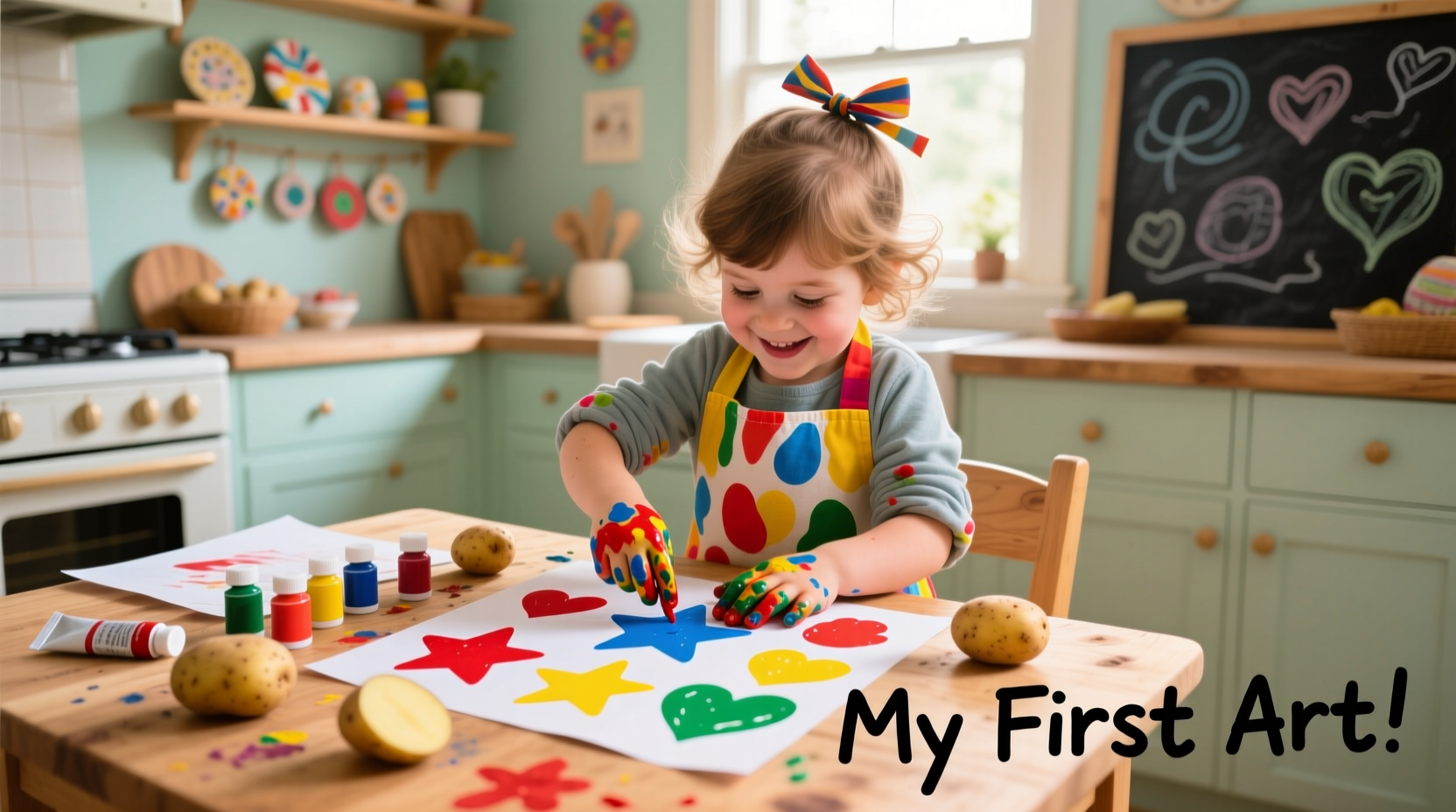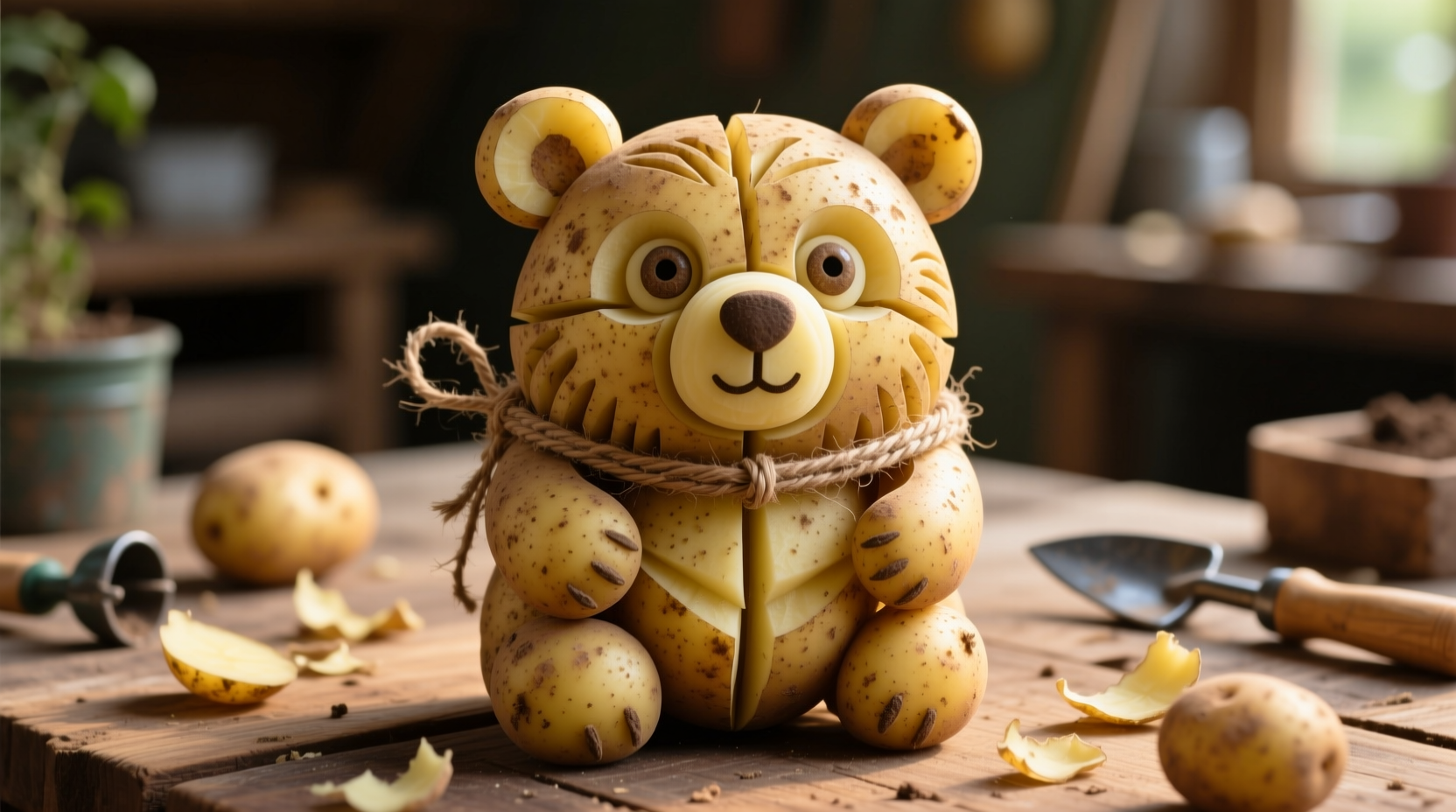Potato crafts are creative activities using potatoes as the primary material, including stamping art, science experiments like potato batteries, and sculpting projects. These accessible, low-cost activities develop fine motor skills, teach basic science principles, and provide hours of educational fun for children and families.
Why Potatoes Make Perfect Craft Materials
Potatoes offer unique properties that make them ideal for hands-on learning. Their firm yet workable texture allows for easy carving and stamping, while their chemical composition enables fascinating science demonstrations. The starch content provides natural adhesion for certain projects, and their uniform shape creates consistent results for stamping activities.
| Potato Variety | Best For | Working Time | Preservation Tip |
|---|---|---|---|
| Russet | Carving & sculpting | 2-3 hours | Coat with vegetable oil |
| Yukon Gold | Stamping projects | 1-2 hours | Work quickly before drying |
| Red Potatoes | Science experiments | 3-4 hours | Keep in cool water |
Getting Started: Essential Supplies
Before diving into specific projects, gather these basic supplies that work for nearly all potato crafts:
- Firm, blemish-free potatoes (choose varieties based on your project)
- Plastic knives or safe carving tools for children
- Non-toxic washable paints
- Brushes of various sizes
- Cardstock or heavy paper
- Cookie cutters (for shaping)
- Galvanized nails and copper coins (for science projects)
Step-by-Step Potato Craft Projects
Potato Stamp Art for Young Children
This beginner-friendly project develops fine motor skills while introducing basic art concepts. Cut potatoes in half and use cookie cutters to create shapes from the cut surface. Children can press the potato shapes into paint and stamp patterns on paper.
Pro tip: For cleaner prints, let children press straight down without twisting. Change colors frequently by wiping the potato surface with a damp cloth between colors.
Potato Battery Science Experiment
This educational project demonstrates basic electrochemical principles. Insert one galvanized nail and one copper coin into a potato about 2 inches apart. Connect multiple potato batteries in series using wires with alligator clips to power a small LED or digital clock.
According to Science Buddies, a single potato battery typically generates 0.5-0.8 volts of electricity, enough to power small electronic devices when multiple units are connected. This hands-on demonstration helps students understand energy conversion and circuitry principles.

Potato Sculpture Creations
For more advanced crafters, potatoes can be carved into intricate sculptures. Start with simple shapes like animals or letters, using plastic knives to remove small sections at a time. The key is working with the potato's natural shape rather than against it.
University extension programs note that potatoes have been used in educational settings since the early 20th century as accessible sculpting materials. Their firm texture provides resistance that helps develop hand strength and coordination in young children.
Maximizing Educational Value
Potato crafts offer opportunities to integrate multiple learning domains:
- Science: Discuss plant biology, starch properties, and electrochemical reactions
- Art: Explore color theory, pattern creation, and texture
- Math: Count stamps, measure spacing, and identify shapes
- Motor Skills: Develop hand-eye coordination and fine motor control
Common Challenges and Solutions
Every craft project encounters hurdles. Here's how to address common potato craft issues:
- Drying out: Potatoes lose moisture quickly. Work with one potato at a time and store unused portions in water.
- Smudging: For cleaner stamp prints, use thicker paints and press firmly without twisting.
- Weak battery output: Ensure electrodes don't touch inside the potato and use fresh potatoes with high moisture content.
- Structural collapse: For sculptures, leave thicker sections between carved areas to maintain stability.
Safety Considerations
While potato crafts are generally safe, follow these precautions:
- Use plastic or blunt-tip tools with young children
- Supervise all cutting activities
- Avoid eating potatoes used for crafts (they've been in contact with paints and other materials)
- Wash hands thoroughly after handling potatoes and craft supplies
Extending the Learning Experience
Transform simple crafts into deeper learning opportunities:
- Track potato battery voltage over time with a multimeter
- Compare results using different potato varieties
- Document the craft process through photography or journaling
- Research the history of potatoes and their global journey











 浙公网安备
33010002000092号
浙公网安备
33010002000092号 浙B2-20120091-4
浙B2-20120091-4